Mangetout: How To Grow This Excellent Crop Vertically, Even In A Small Space Garden
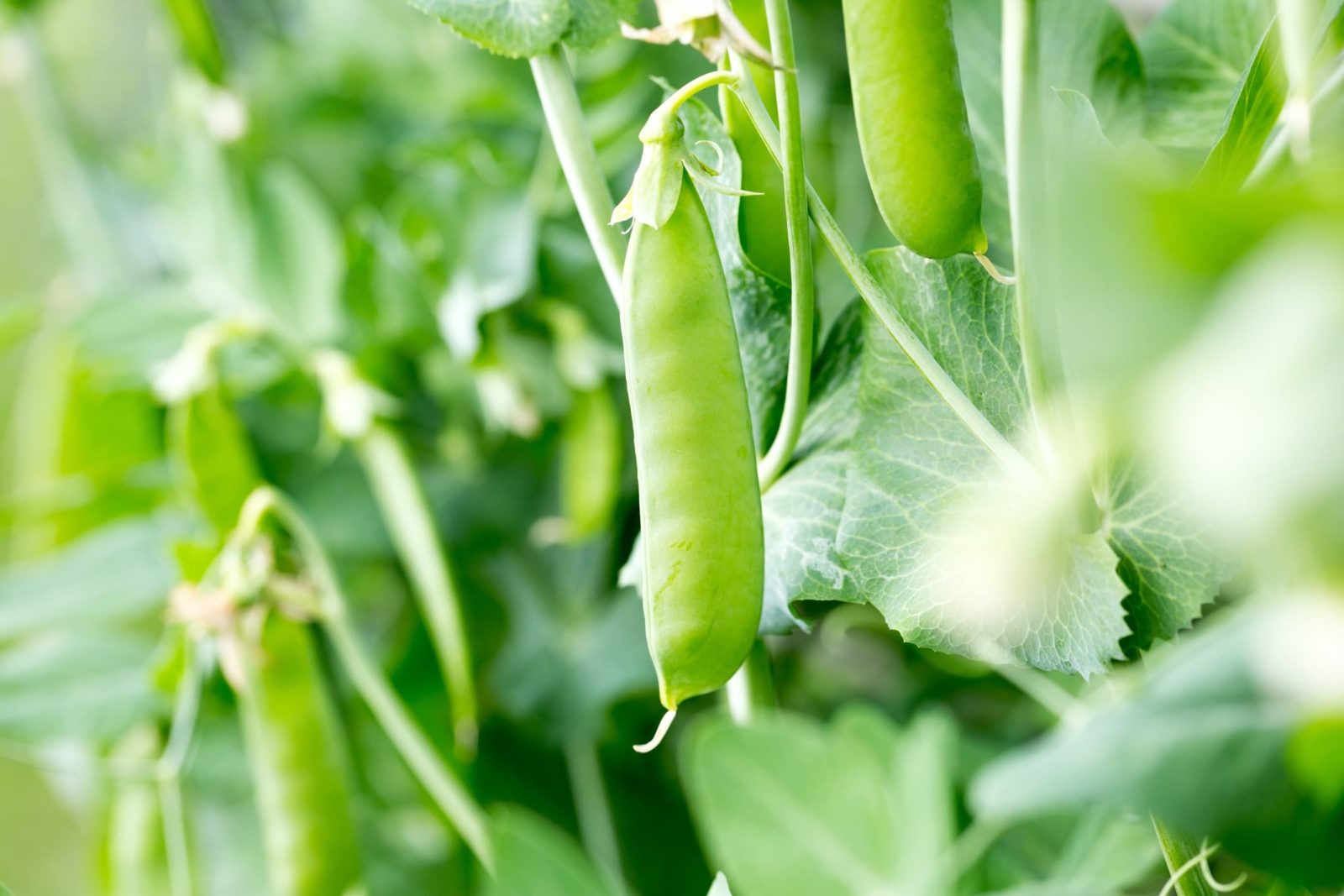
VEGETABLES > MANGETOUT

Elizabeth is a Permaculture Garden Designer, Sustainability Consultant and Professional Writer, working as an advocate for positive change. She graduated from the University of St. Andrews with an MA in English and Philosophy and obtained a Diploma in Applied Permaculture Design from the Permaculture Association.
Reviewed By PETER LICKORISH

Peter is a Horticulture Lecturer and self-employed Horticulturist, with a passion for diverse areas of the industry - from garden design to the science behind plant growth and propagation. He has completed the Royal Horticultural Society’s Master of Horticulture (MHort) Award and lectures on RHS courses at Bedford College.
IN THIS GUIDE
MANGETOUT GUIDES
Mangetout are an excellent crop to grow in a small space garden.
These are pea varieties where you eat pods and all before the seeds develop.
They can crop prolifically and provide a far greater yield than podding peas, which can make them a great choice for a smaller garden.
Eaten straight from the plant, or used in salads or other recipes, they are a delicious crop to grow yourself at home.
Overview
| Botanical Name | Pisum sativum |
| Common Name(s) | Mangetout, Snow Peas, Sugar Snap Peas |
| Plant Type | Annual Vegetable |
| Native Area | Cultivated |
| Hardiness Rating | H2-H4 |
| Foliage | Annual, some varieties can overwinter with protection |
| Flowers | White, edible flowers |
| When To Sow | February, March, April, May, June, September, October |
| Harvesting Months | June, July, August, September, October |
Sunlight
Preferred
Full Sun
Exposure
Sheltered
Size
Height
0.5 – 2M
Spread
0.5 – 2M
Bloom Time
Varies
Soil
Preferred
Most fertile soils
Moisture
Moist but well drained
pH
Any
Mangetouts are peas which are eaten pods and all – the name, in French, literally means ‘eat all’.1Mangetout definition and meaning. (2023). In Collins English Dictionary. Retrieved March 21, 2023, from https://www.collinsdictionary.com/dictionary/english/mangetout
While the pods of all peas are edible, those from shelling pea varieties can be stringy, and not necessarily as pleasant or palatable as varieties that are specifically mangetout.
In the US and elsewhere, mangetout peas are typically described as ‘snow peas’ and ‘snap peas’.
Sugar snap peas are usually those with a rounder pod and crunchier texture.
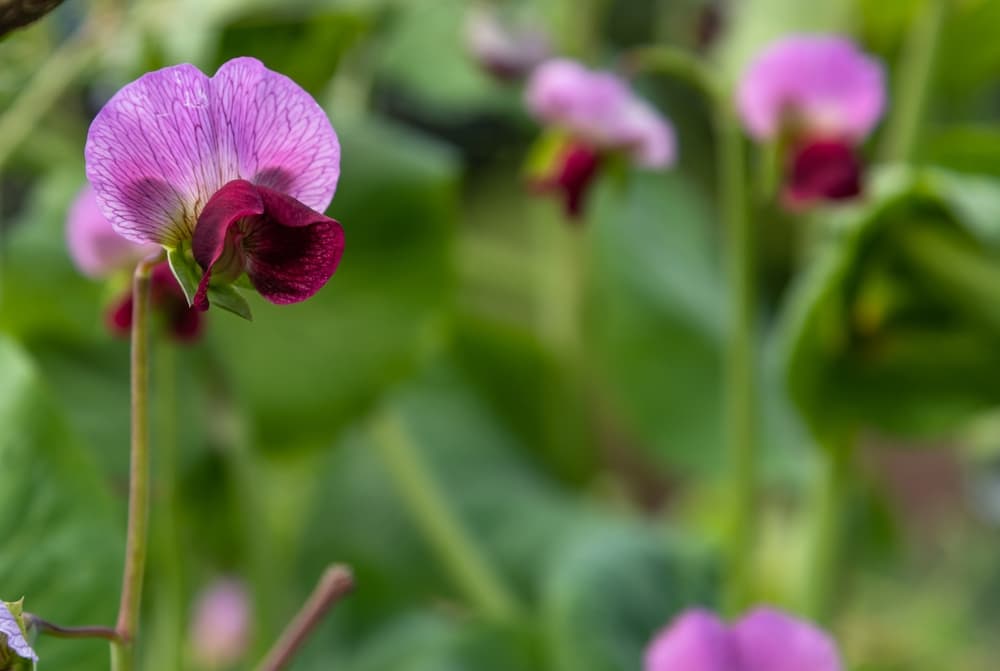
Mangetout peas can be eaten as flat pods, like those described as snow peas elsewhere – or they can be eaten with peas in the rounded pods, like sugar snap peas.
All mangetout, snow peas and snap peas, like typical shelling garden peas, are known botanically as Pisum sativum.
These are simply varieties of this annual plant that have been bred for tender and sweet, delicious pods.
Both snow peas and snap peas, also described as mangetout, are within the Macrocarpon genra of Pisum sativum – P. sativum var. Macrocarpon.2Stephens, J. (2018, November 5). Pisum sativum. University of Florida. Retrieved March 21, 2023, from https://edis.ifas.ufl.edu/publication/MV109
Why Grow Mangetout?
Mangetout are a high-yielding and low-effort crop, perfect for gardeners old and new – peas are a staple crop in many UK gardens.
However, peas that are shelled from their pods often do not deliver a high yield for the space they take up.
Shelling peas are removed from their pods when mature, so pods and plants are all simply composted, often leaving little more than a few handfuls of peas.

When growing mangetout, however, you get more ‘bang for your buck’.
Harvesting the pods early and often encourages more flowers and pods to form, so you can get a lot more from one pea plant.
High Yields
Since you are eating the pods too, you will yield a higher weight of produce overall, and therefore, eat more of the plant.
Mangetout also save you the labour of shelling, which can take up a lot of time if you grow a lot of peas – this can therefore be a better choice for a lower maintenance and less time-consuming garden.
Mangetout peas can also be harvested and out of the garden sooner, making way for other crops.
Nitrogen Fixing
Like other peas, they are nitrogen-fixing plants, which can be used in crop rotation plans, and to maintain fertility in an organic garden.
One downside of mangetout is that since you harvest before maturity, you will not usually be able to save the seeds for next year.
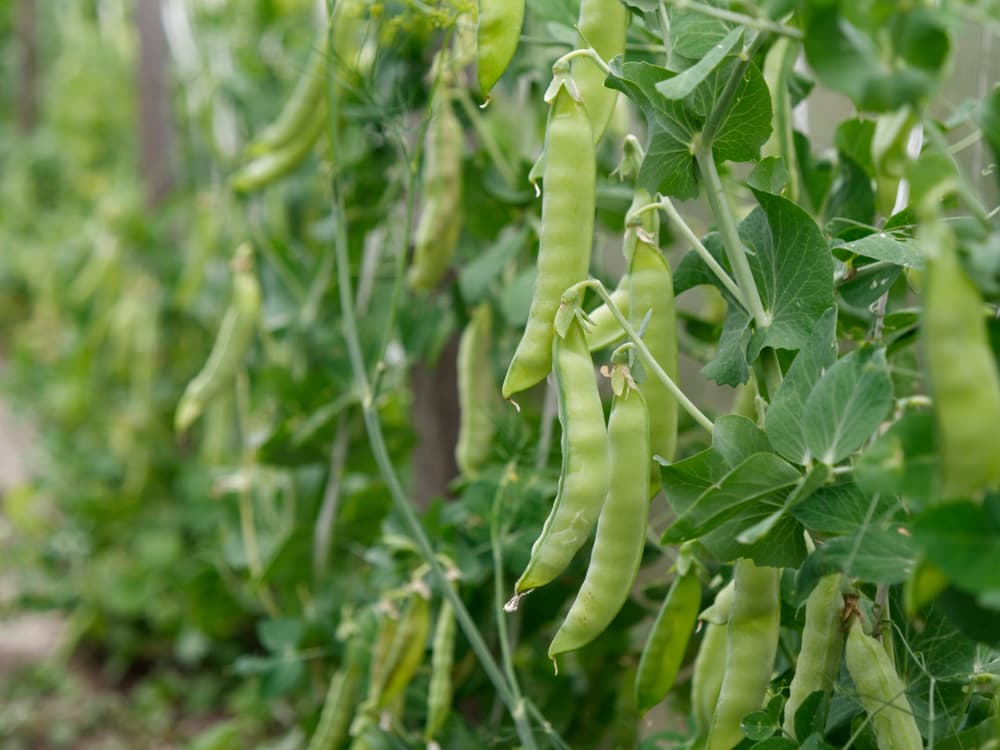
However, leave one plant in place and allow some pods to fully mature, and you can still save seeds and become more self-sufficient in your garden.
Like shelled peas, mangetout can also be frozen to preserve them for the months to come.
Mangetout Varieties

There are a range of mangetout varieties to consider growing in UK gardens; some popular varieties include:
- ‘Bijou’ Giant sugar pea
- ‘Carouby de Mausanne’ mangetout
- ‘Delikett’ sugar snap
- ‘Golden Sweet’ yellow podded
- ‘Norli’ sugar pea
- ‘Oregon sugar pod’
- ‘Shiraz’ purple podded peas
- ‘Purple Magnolia’ purple podded snap pea
- ‘Sweet Horizon’
When choosing which peas to grow, remember to consider the height to which they will grow.

Though dwarf varieties can sometimes be grown without, most peas will do best when provided with some type of support (more on this below).
How To Grow Mangetout
Where To Grow
Like other pea varieties, mangetout types will grow well in full sun or light, dappled shade.
They will do well in most soil types, and can also be grown relatively easily in containers, especially those with plenty of depth.
They can thrive in any typical kitchen garden or vegetable plot, and will also be good companions for a range of your other edible crops due to their nitrogen-fixing properties.

Consider growing mangetout or other pea varieties in beds alongside crops with high nitrogen requirements, or following peas by brassicas or other nitrogen-hungry plants in a crop rotation plan.
Mangetouts on supports can also provide shade for other crops – spinach for example, which can do with shade to avoid issues with bolting in summer.
Sowing & Planting
Mangetout should usually be sown indoors in March, or outside in your garden in April, May and up to early June. Successional sowing can lead to a prolonged harvesting period.
While peas will usually germinate well in the ground, it is sometimes better to sow indoors in modules or small pots/seed trays to avoid losing the seeds to rodents or other pests early in the year.
“Only sow one seed per container or module, to minimise the root disturbance that they resent,” shares Peter Lickorish, a Horticultural Consultant.

There are a number of different schools of thought when it comes to spacing for peas, and spacing will in part depend on the variety or varieties you have chosen to grow.
Peas are often placed around 5-7.5cm apart, in 15cm double or triple rows around 30cm apart, often along a trellis or a row of twigs for the peas to cling to as they grow.
The width and spacing within rows can vary and there are no precise rules.
In a square foot garden, peas are typically spaced with 8-9 per square foot, with support.
“Though canes offer great support for mangetout, you have to be careful with their sharp tips when harvesting, as they can be at eye level,” says Peter.
“Therefore, it is important to use cane caps or, if you fancy a quaint Victorian-style kitchen garden, small clay pots resting on the cane ends are really decorative – as long as their hole is smaller than the cane’s diameter.”
Some people simply broadcast pea seeds over a wide row (c. 30cm wide) 2.5-5cm apart and still have great results.
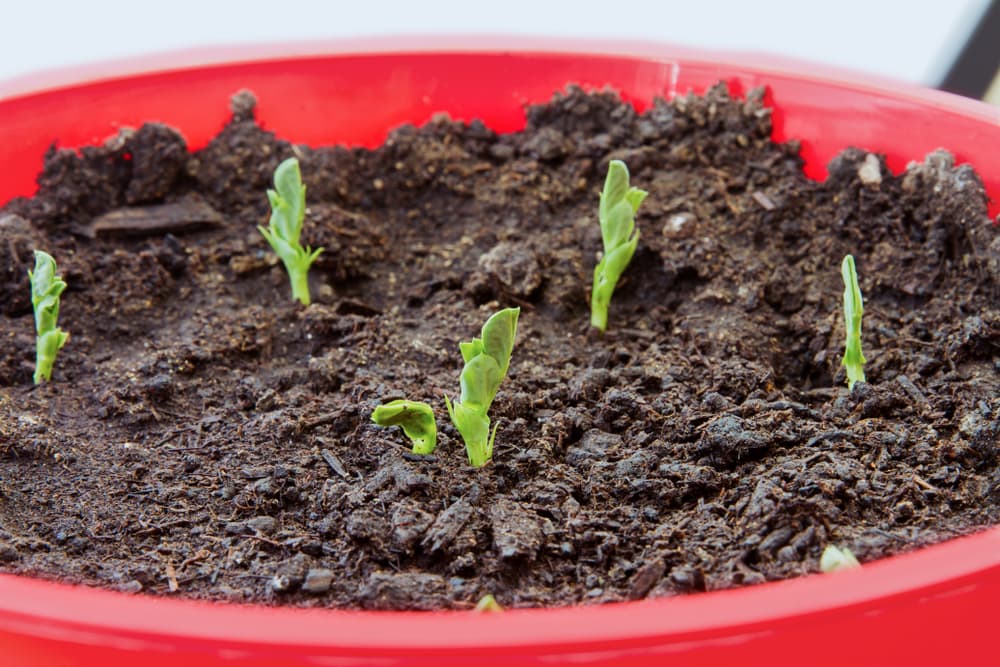
I find that double rows, or wide rows with broadcasted peas both work well, and provide the maximum yield for a given area – and prefer these methods to single rows – but you may find you prefer single rows.
Feel free to experiment a little with sowing peas to see what works best in your garden.
Generally, they are sown around 3cm deep.
Mangetout Care
Make sure that you have provided support for your peas, and train them as they grow so that they cling to their supports where necessary.
Support can be a trellis or other vertical structure along the side of a bed, branching twigs within the bed at regular intervals, or poles and wire/twine strung around a wide row, for example.
Watering
Make sure, also, that you keep your peas well watered, and regularly check moisture levels in the soil.
Remember, mangetout grown in containers will need to be watered more frequently, but mangetout will require less water than peas which will be grown to maturity for shelling peas.
Fertilising
One of the things that makes peas so easy to grow is that they will not usually require additional fertilisation.
Mostly, they can be left more or less to their own devices; just get rid of problematic weeds to make sure the plants have the space to grow.
Common Problems
If you have mice or voles, these can be one of the most problematic pests when it comes to growing mangetout in your garden.
Planting indoors early in the season will reduce losses and avoid the loss of all your seeds to these hungry rodents.
If pigeons are a persistent problem, and are eating your mangetout seedlings before they get the chance to develop and grow, consider netting your crop, or creating some other physical barrier.
You might also consider growing peas inside a polytunnel or row cover structure (perhaps alongside cabbage family plants which can also be bothered by these pests).
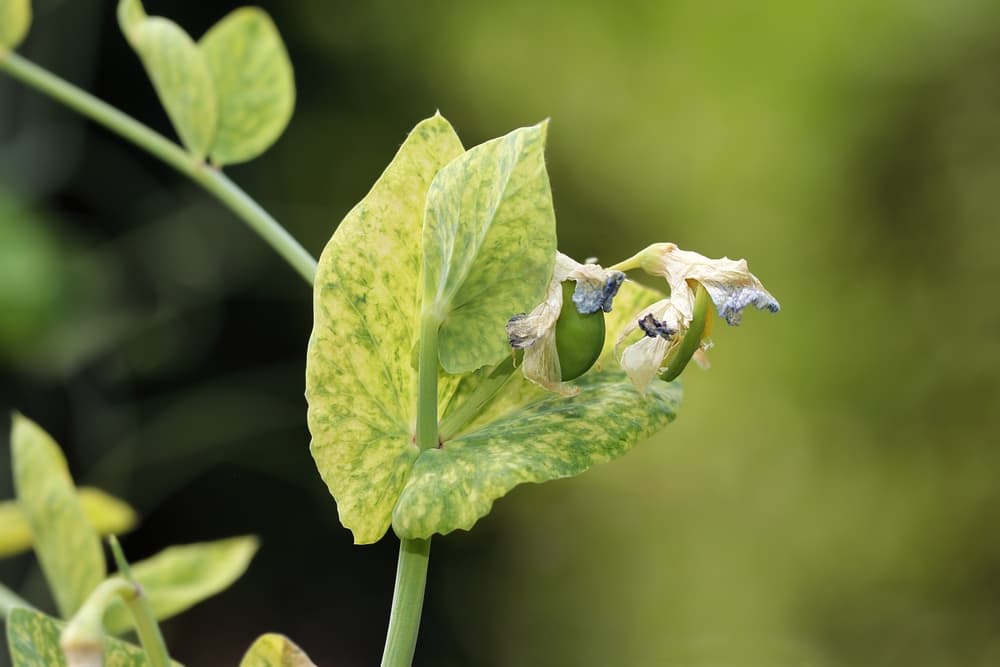
If you see a dusty white powder on your peas, this is likely powdery mildew.
This fungal issue is less likely to occur if you keep the soil around your mangetout moist, or provide shade to create cooler growing conditions.
“Pea and bean weevils may also chew notches out of leaf margins, but their presence rarely impacts yields,” says Peter.
Harvesting Mangetout
Mangetout and sugar snap peas should typically be harvested when the pods reach around 5-8cm long, and the tiny seeds become visible inside the pods.
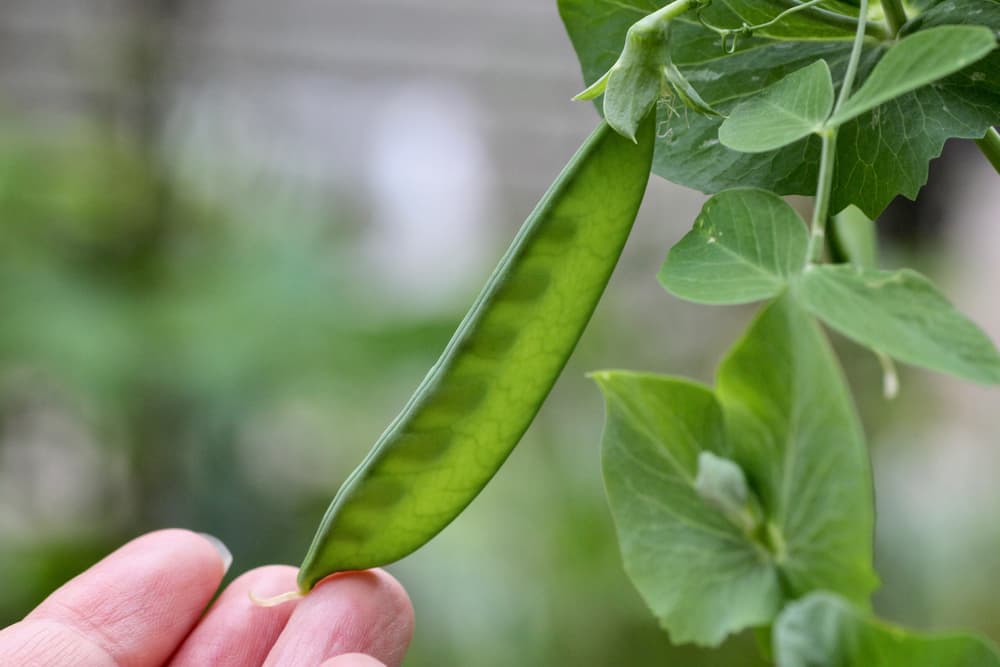
Some varieties can be harvested as few as 10 weeks from sowing, so much sooner than many other typical garden crops.
Some are harvested while the pods are still flat, while other varieties are harvested once the pods round out with small immature peas.
Make sure you know which variety you are growing and what it should look like at harvest time.
Remember, if you have too many to eat now, you can also consider freezing them for later use.
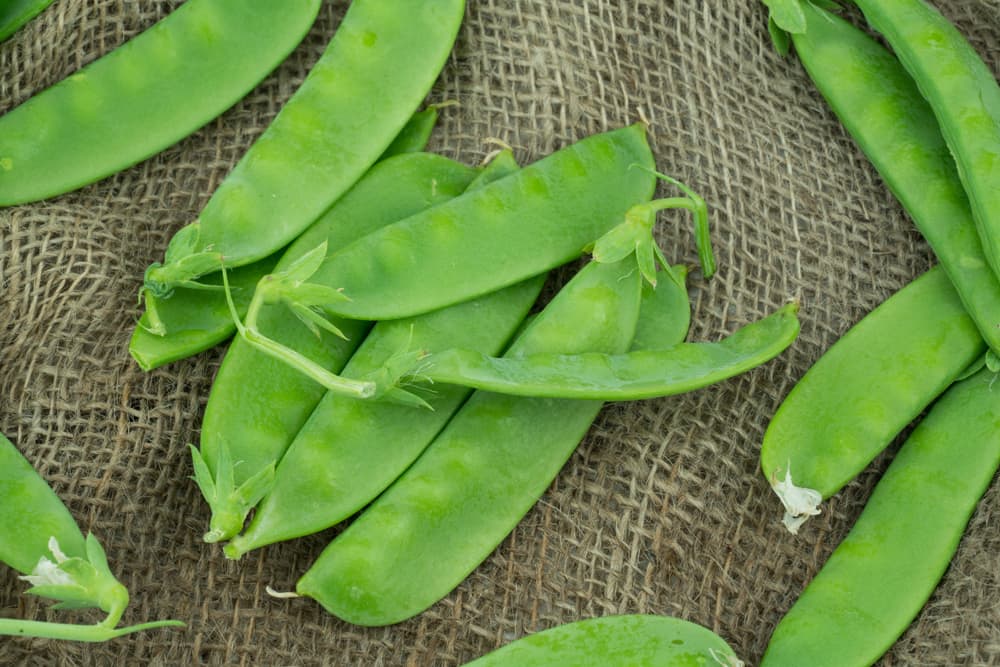
If you do not already grow mangetout in your garden, then this is an easy and usually hassle-free crop that you should most definitely consider.
References
- 1Mangetout definition and meaning. (2023). In Collins English Dictionary. Retrieved March 21, 2023, from https://www.collinsdictionary.com/dictionary/english/mangetout
- 2Stephens, J. (2018, November 5). Pisum sativum. University of Florida. Retrieved March 21, 2023, from https://edis.ifas.ufl.edu/publication/MV109
